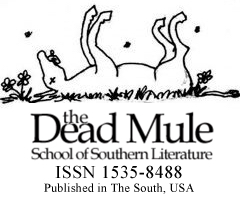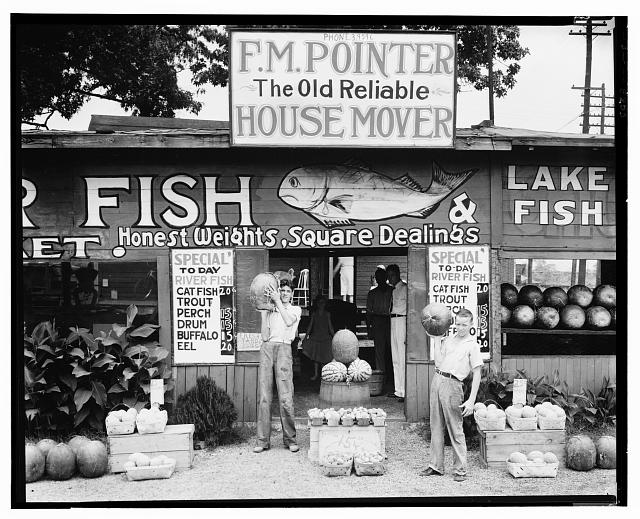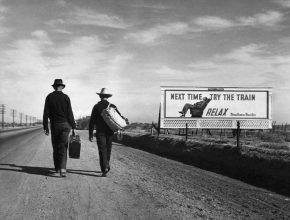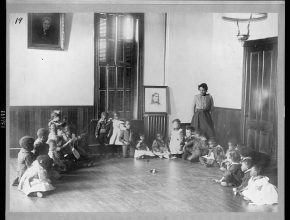Southern Legitimacy Statement: Though Claire Fullerton resides in Southern California, she considers herself a Southern writer. Having been reared in Memphis, she’ll be the first to tell you that you can take the girl out of the South, but never the South from the soul.
Visiting Como, Mississippi
I recently travelled from Southern California to the Delta. Although I grew up in Memphis and will always call it home, I hadn’t been to the South in three years. But I had a good reason for making the trip from California: I’m writing a novel partially set in Como, Mississippi, and as I began the outline, it occurred to me I needed specific information to establish a strong sense of place. It seemed to me the muses were assisting me with fortuitous timing, when I received a phone call from a friend, who, upon hearing of my plans, said I had to meet a Como native named Sledge Taylor. “Trust me on this,” she encouraged, “he knows everything about Como; just write him about your book and tell him we’re friends.” I introduced myself to Sledge Taylor via e-mail. I told him I’m writing a book set in Como and would like to meet him in person, if he possibly had the time.
 Here’s the great thing about Southerners: they make time to be hospitable. I’m thinking now, for this particular local, it couldn’t have been easy. Sledge Taylor is a fifth generation, Como, Mississippi farmer, the owner of 8,000 acres of land on which cotton, corn, peanuts, soybeans, wheat, and timber is managed. More precisely, Sledge Taylor is a gentleman farmer, and by this I mean were to pass him on Como’s Main Street, where a smattering of businesses faces the railroad tracks like ducks in a row, the last thing you’d think by his genteel bearing is there goes a farmer. A scholar or historian would probably be your first guess, and you wouldn’t be far off. I didn’t know this until I’d spent five and a half hours in his company, but he fits the profile of today’s Como farmer in that he is scientist, artist, and historian rolled into one.
Here’s the great thing about Southerners: they make time to be hospitable. I’m thinking now, for this particular local, it couldn’t have been easy. Sledge Taylor is a fifth generation, Como, Mississippi farmer, the owner of 8,000 acres of land on which cotton, corn, peanuts, soybeans, wheat, and timber is managed. More precisely, Sledge Taylor is a gentleman farmer, and by this I mean were to pass him on Como’s Main Street, where a smattering of businesses faces the railroad tracks like ducks in a row, the last thing you’d think by his genteel bearing is there goes a farmer. A scholar or historian would probably be your first guess, and you wouldn’t be far off. I didn’t know this until I’d spent five and a half hours in his company, but he fits the profile of today’s Como farmer in that he is scientist, artist, and historian rolled into one.
I met Sledge Taylor for lunch at the Windy City Diner, and then we walked down Main Street while he gave me the history of all of its businesses. We spent much time in the iconic, oak floored Holy Innocents Episcopal Church, built in 1872, where a towering stain glass window memorialized one of his ancestors. Getting in his truck, we left Main Street to drive out to the countryside, where he pointed out the vestiges of once vibrant working plantations, in an accent so fluid it brought ghosts back to life.
Como, Mississippi is an insular, sequestered, beautiful place. Its environs are haunted with back-story, and something about it seems weighty and low to the ground. It is teeming with verdant life so ubiquitous in every direction, it felt like riding through forest primeval on the coattails of borrowed time. It was noiseless being buffered on the flat roads by the woods on the outskirts of town. Close to three hours in the truck, and I don’t recall another vehicle passing on any stretch of the scantily marked, narrow roads. Oak and elm, eucalyptus and pines towered in May’s chiaroscuro of Kelly-green, over a tangle of wild kudzu, curly dock, and Virginia creeper so riotous, it seemed a sylvan overgrowth cover the earth. As one breaks out from the sun-dappled, canopied woods, flat farmland stretches in vistas beneath an endless sky as far as the eye can see. It’s a setting with a fine line between history and folklore, where land is destiny, and there’s a thin veil between this world and the next. I wrote down Sledge Taylor’s answers to my questions as we drove through the area. I wanted to know the names of indigenous plants, who owned which parcel of land, what was growing in the fields, and how long the pecan groves on the Taylor ancestral property had been standing. I learned that the first of them was planted in 1892, yet they looked, in their neat, flourishing maturity, as if they’d loomed in rows by the hundreds, since the beginning of time. All of Como seemed this way to me. There’s an overarching sense to its historic mainstay like watchful eyes on the back of your neck.
And then there was the gravel road we turned on without any warning. For whatever reason, Sledge Taylor didn’t give me a heads up, as he drove onto the property of a friend’s house, which had been in the family since 1902. Maybe I’ve been living in California too long, but I’ll go on and say it for dramatic effect: The house and grounds looked like a movie set, for all their awe-striking prominence. The house rose up on 2,000 acres, on a patch of velvet lawn: a stately, four columned domicile with a wide, pitched red roof. In the back, before three worn brick steps, a heavy muscadine grape trellis, wrestled into thick braided twists, heralded the kitchen’s entrance, and it didn’t take much to intuit the shade it would cast, in the sweltering heat of a Mississippi summer. Getting out of the truck, we shook hands with the groundskeeper, who seemed to appear through an act of divine timing. Thirty nine years he’d overseen the house and grounds for the family that occupies it now in sporadic attendance. We went into the house and walked through what I immediately knew to be one of Como’s celebrated, grand houses. Two storied with two verandahs, every high-ceilinged room was in its original state. Well-trodden rugs covered hard wood floors; a front wooden staircase flowed up to bedrooms with screened windows and four poster beds. In the walls, built-in shelving and nooks and crannies, and an expansive view from the second floor’s landing rambled all the way to a cabin by the lake. To say I could feel history embedded in the walls is putting it mildly. It was more than the austere oil painting of the houses’ first owner, hanging on a downstairs wall, its magisterial eyes following me, it was the conflicting personality of the house, a shop-worn interior elegance harmonizing with the outdoors through the placement of ceiling fans and screened porches. It seemed an artful house that had evolved through the ages to suit the needs of the changing times.
As I toured another spacious, lakeside residence in Como, it came to me that much of Como’s personality comes from the way one negotiates life when tied so tightly to the land. It is an area where ladybug infestation is a problem; high rains, long droughts, and extreme seasonal temperatures govern reality; and the portent of an Eastern box turtle crossing the road is as good a sign as any of a coming rain.
From what I saw of Como, those that live there didn’t just land there arbitrarily. They’re there for a good reason, and it seemed to me that reason was generationally bestowed. There’s a reverence to Como, a respect for who and what came before, which lends itself to the idea of honorable stewardship, if one is born to it. And my guide, Sledge Taylor, was born to it, and I was shown much of Como, Mississippi through his proud eyes. Five and a half hours wheeling through the breathtaking area, and I came away not only with a sense of Como’s history, but knowing what it means to be so much a part of a place that you take the time to show it off.







